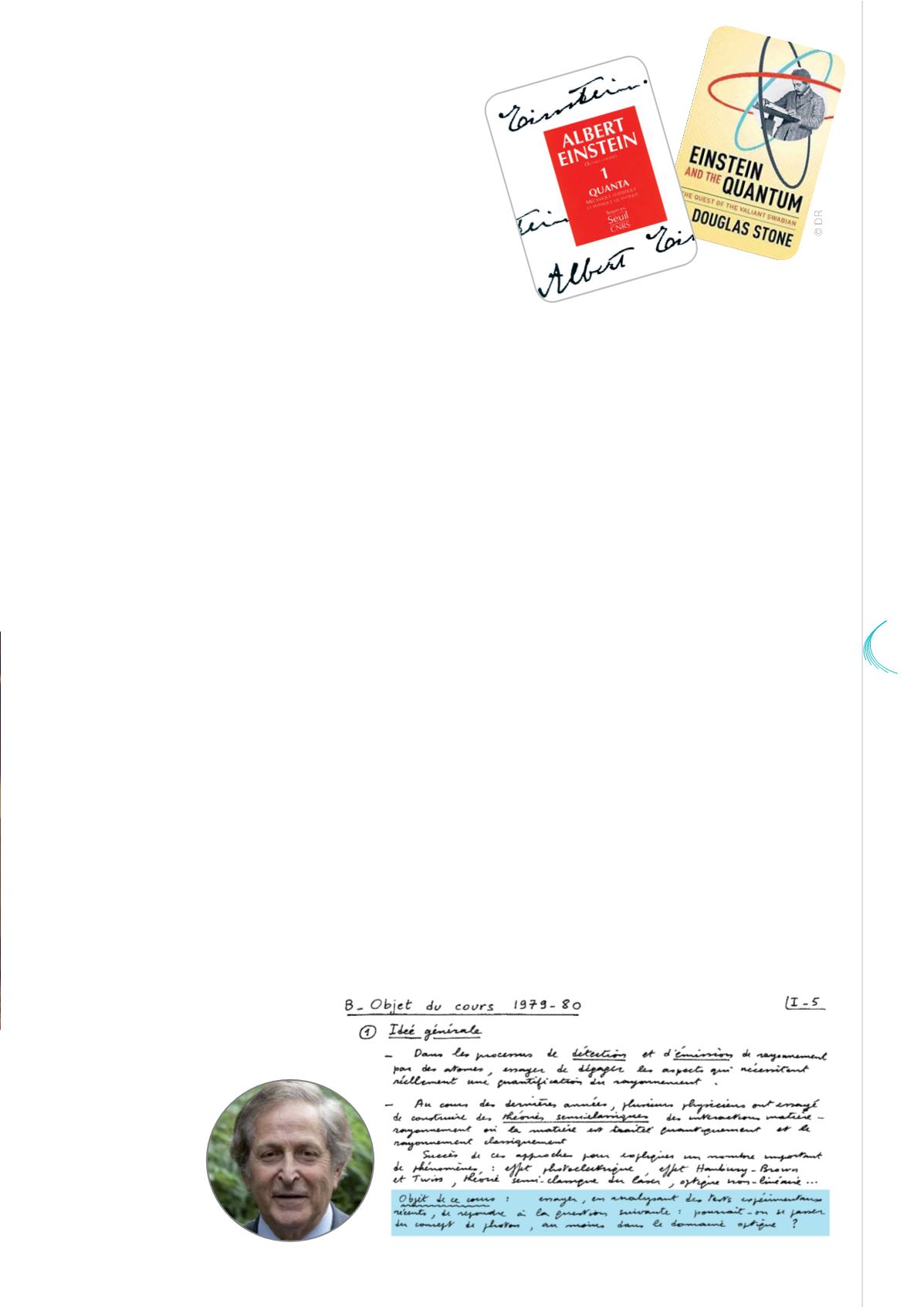

350
YEARS
OF
SCIENCE
71
© DR
Fruitful questioning: "Object of this course: to try […] to answer the following
question: could we do without the concept of photon, at least in the field of optics?".
Claude Cohen-Tannoudji, course at Collège de France, 1979
Claude Cohen-Tannoudji
The major role of Einstein in the emergence of quantum
theory is highlighted in "
Albert Einstein, Œuvres
choisies (French translations), Tome 1: Quanta. Texts
selected and presented by Françoise Balibar, Olivier
Darrigol and Bruno Jech. Seuil and Éditions du CNRS"
,
and in "
Einstein and the Quantum, A. Douglas Stone,
Princeton University press, 2014"
.
of light as an electromagnetic wave? Einstein, an
admirer of Maxwell, could not ignore the question
and provided a masterful answer to it on his
first appearance at a scientific conference, the
conference of German physics that held in Salzburg
in 1909. Einstein developed there a series of
arguments and concluded: “
I only wanted to briefly
illustrate the fact that the two structural properties
(wave structure and quantum structure)…should
not be seen as incompatible
.” At the end of each
argument, Einstein’s conclusion was the same: light
is both wave and corpuscle. It would take fourteen
years before Louis de Broglie would express this
wave-particle duality, this time not for light but for material particles.
With wave-particle duality, modern quantum physics was born. Optics would continue progressing all
over the 20
th
Century, notably with the invention of the laser, and the French scientists, perpetuating the
tradition of their predecessors, would take an eminent stand there, supplying our Académie with important
battalions. But the wave-corpuscle duality of light still remained quite mysterious, as is apparent from
the questions of the future Nobel laureate Alfred Kastler, then a high-school professor in Bordeaux in
1932; such questions led him to discover optic pumping with Jean Brossel. “
If this synthesis satisfies
the mathematician
”, Alfred Kastler wrote, “
it continues to worry the physician, who shall not be content
with abstract formulas. To him, the duality between the wave aspects and the corpuscle aspects of light
remains an unresolved mystery...
” (Les propriétés corpusculaires de la lumière, In
Procès-verbaux des
séances de la Société des sciences physiques et naturelles de Bordeaux
, 1931-1932, pp 32-58)
Thirty two years later, as a student in upper sixth at the Lycée of Agen, I asked the same questions to
a professor who was hard put to answer it, despite his huge capacities. It would take me fifteen more
years to find, as many of my contemporaries, illuminating answers at Claude Cohen-Tannoudji’s course
at Collège de France, as he
clarified such questions and
thus enabled the French
School of Quantum Optics
to exert a radiant influence
throughout the world.


















